#historiesmysteries
Video
Are you watching my new show on youtube, Babette Babylon? Here I am detailing the anniversary of the execution of Albert Fish. New episodes drop every week on my youtube channel. Subscribe today and don't miss a single moment of oddities weirdness. #babettebombshell #babettebabylon #unsolvedmysteries #truecrime #paranormal #historiesmysteries #cryptozoology #fortean #xfiles
#cryptozoology#xfiles#unsolvedmysteries#paranormal#historiesmysteries#babettebombshell#babettebabylon#truecrime#fortean
1 note
·
View note
Photo

In 1918 #EdmundBDelabarre suggested a Portuguese origin for the inscriptions on #DightonRock noting a lost expedition of Gaspar Corte Real that visited North America in 1511. . . Later in 1960, Manuel da Silvia compared Dighton's inscription with known #Portuguese markers found in Asia and Africa. . . . #talesofnewengland #dightonrockstatepark #portugueseexplorers #archeology #historical #history #historiesmysteries #mystery (at Dighton Rock State Park)
#mystery#dightonrock#historical#historiesmysteries#history#talesofnewengland#portuguese#archeology#portugueseexplorers#dightonrockstatepark#edmundbdelabarre
0 notes
Photo

A Scottish Playwright, The bones of a Giant, and a Skull Chalice 11th September 1762, birth of Romantic poet and playwright Joanna Baillie, named the ‘female Shakespeare’, by her friend, the poet and novelist Sir Walter Scott. Baillie’s father claimed ancestry from William Wallace, while her mother was the sister of the famed anatomists and physicians William and John Hunter. With an interest in philosophy and the Gothic, Baillie’s work was celebrated during the 19th century, and led to literary friendships with William Wordsworth, Robert Southey, Anna Barbauld and Lord and Lady Byron. Baillie’s gothic work the ‘Plays on the Passions’ first conceived in 1791, detailed the extremity of human passions from love to hate, a recurring motif in her work being that of dead male bodies. Could this be a link to her association with the anatomical work of her uncles? In her 1812 play ‘The Dream’, one of her characters The Prior of a monastery has a large skeleton exhumed from an unmarked grave in the monastery’s vaults. This story has resonance with both her Uncles, and her friendship with Lord Byron. In the early 1800’s, a skull was unearthed by a gardener at Newstead Abbey, the ancestral home of Lord Byron. Byron had the skull turned into a chalice, writing a poem about the skull in 1808. In 1768, Baillie’s uncle John Hunter built his famous anatomy theatre and museum in Great Windmill Street, Soho, London. He is alleged to have paid for the stolen body of Charles Byrne, "The Irish Giant", who against the wishes of Byrne’s family displayed and studied the skeleton. He also studied and displayed the corpses of executed criminals. Another controversy, heavily disputed, was suggested In 2010, when it was claimed that the Hunters obtained pregnant women for anatomical study by paying for their murders. #gothicliterature #macabre #macabreart #macabreartist #gothic #gothicstyle #tarot #tarotart #tarotartist #anatomy #graverobbing #lordbyron #romanticism #skull #historyart #hiddenhistory #historic #historical #tarothistory #historyofanatomy #joannabaillie #macabrehistory #mystery #fantasmagoria #historiesmysteries #historylovers #historygeek https://www.instagram.com/p/CFCX7iDgylp/?igshid=1bqpt3wc6c6m6
#gothicliterature#macabre#macabreart#macabreartist#gothic#gothicstyle#tarot#tarotart#tarotartist#anatomy#graverobbing#lordbyron#romanticism#skull#historyart#hiddenhistory#historic#historical#tarothistory#historyofanatomy#joannabaillie#macabrehistory#mystery#fantasmagoria#historiesmysteries#historylovers#historygeek
0 notes
Text
The Glenesslin: Pints, Ploys, and a Picturesque Wreck
By most accounts October 1st 1913 was a beautiful day on the Oregon coast. The sky was clear, the ocean was calm, and anyone walking near the town of Manzanita could take in views of the sun, the sea, and the rocky coastline. Although the age of steamships was fast approaching, looking out into the water one could still see great ships with their full sails, cutting through the water with the permission of Mother Nature and guided by their crews. One of the ships coursing through the sea that day was the highly decorated and revered Glenesslin, a windjammer that eleven years earlier set a world speed record for traveling from Portland to South Africa in only seventy-four days. She was a beautiful ship, and on this first October morning of 1913 her sails were full as she crashed headfirst into the rocks at the base of the Neahkahnie Mountain.
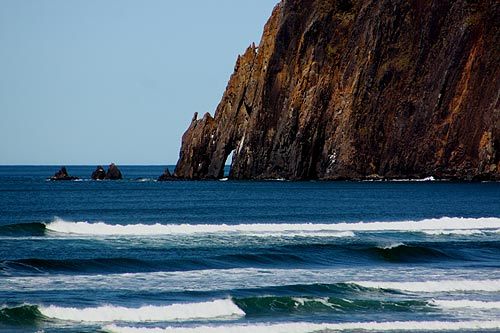
A modern view of the coast near Manzanita, near the site of the Glenesslin wreck.
The Glenesslin was only twenty-eight years old when it met its bizarre demise. Built in Liverpool, it was the pride of the C.E. DeWolf & Co. fleet and was an amazingly fast ship. But, times were growing hard for sailing due to the introduction of steam power. Sailing ships were slower, much less predictable, and far more susceptible to natural factors delaying or sometimes ruining a voyage (and its crew). Magnificent as she was, the Glenesslin had not been able to turn a profit in years.
In charge of the ship on this last voyage was Captain Owen Williams, a seasoned captain with a spotless record, and his crew of twenty people including his first and second mates, both of which were in their twenties. When the ship crashed a hole was ripped in its underside and it came to rest wedged in the rocks at the base of Neahkahnie Mountain. The crew was stuck in a destroyed ship being pummeled by surf but, thanks to the use of a rescue line, everyone aboard the ship was safely brought to shore. The crew seemed oddly calm about the ordeal, some even took the time to grab possessions before leaving the ship. The crash was a strange event, but what turned it from strange to suspicious was what wasn’t said back on shore.
Naturally, people wanted an explanation for why the Glenesslin crashed but they would find no easy answers. The crew refused to talk and Captain Williams’s few words did nothing to illuminate what went wrong. When asked what happened Williams answered “All I can say is that the boat is ashore and is a total loss.” When asked who was at the wheel at the time of the crash he only said “One of the seamen. I don’t remember his name.” Interviews were attempted but the moment the crash was brought up to the Captain they were immediately ended.
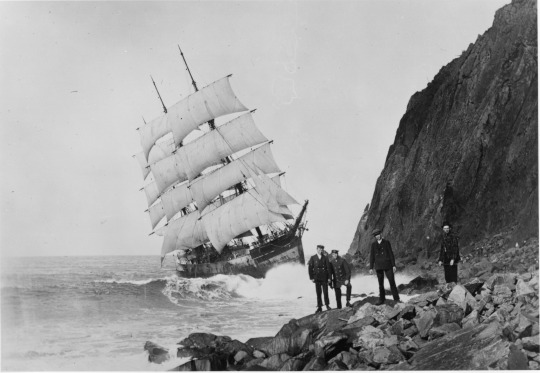
Crew members and locals posing with the wreck of the Glenesslin.
With no official explanation for the Glenesslin story, people began to fill in the blanks themselves. One theory was that the ship simply fell victim to a trap of the sea. Navigators familiar with the region claimed there was a small area, a “wind shadow” where ships could get easily trapped in a pocket of no wind. With nothing to propel the sails and ship forward, the vessel would be stuck. Some theorized that this fate befell the Glenesslin and as the crew was attempting to escape the windless pocket, the winds suddenly picked up and without enough time to react they were sent crashing into the rocks. It might have sounded like a legit claim, but if it was true why did the crew not tell that story? Was the embarrassment of landing in a wind pocket strong enough to silence the entire crew?
If the fault was not on the sea, then it was on the ship. Williams may have been a seasoned professional, but both of his first and second mates were very young at twenty-two years old. As the age of sail began to dwindle it became increasingly difficult for captains to man their ship with an experienced crew leading to sailing ships often resting in the hands of young men who took the job for all the wrong reasons. Sailing ships offered higher titles just to get working feet on deck, they developed a reputation as a stepping stone to getting a position on a steam ship, and sometimes a crew member found himself on board only after being shanghaied. This could lead to even the best captains having to deal with unexperienced and unmotivated crew members. After all, with such a shortage of sailing crew captains often had no choice but to deal with whatever workers he could get.
According to one later testimony, the Glenesslin was not experiencing the sun and clear skies often reported on that day but was actually dealing with fog. Captain Williams left the deck at 12:45pm, telling his second mate he was going to lay down and should be called upon at 2pm. When the second mate went to the captain at the decided time he told him the ship was dangerously close to the shoreline, saying “She's getting very close in." When the captain got to the deck the Neahkahnie Mountain was straight ahead giving them no choice but the head directly into it.
But, the question remains that if any of this was true, why did Captain Williams and the crew refuse to speak about what happened on the ship? The truth may lay not in their accounts, but in the words of those who met the crew on shore. According to multiple accounts when the surprisingly relaxed sailors set foot on shore they and their captain all smelled strongly of alcohol.
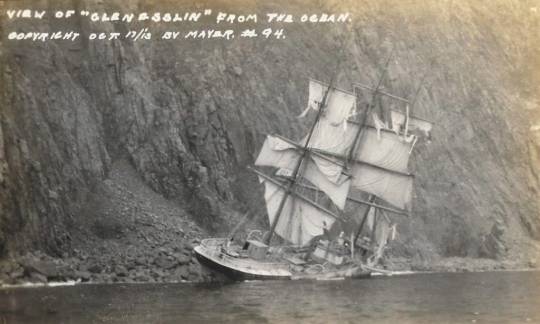
Photograph of the Glenesslin wreck taken several weeks after the crash.
While there are several theories that the wreck of the Glenesslin was accidental due to shadows, inexperience, or alcohol-fueled negligence, there is another possibility that the crash was absolutely deliberate. Captain Williams was undoubtedly aware that the Glenesslin’s days were counting down and taking his job with it. The ship had not turned a profit in years, but there was one way for the captain to get one last payday from the ship, and that was through an insurance payout.
Many factors made insurance fraud seem like an obvious motive for crashing the once famous ship. With the head on collision with the rocks the Glenesslin had a hole torn into the hull making it impossible to fix. The sails were left in place ensuring that any wind would only further press the vessel into the coastline and cause further damage. There would be no loss of cargo, the ship was empty and the exiting crew lacked the panic expected to accompany a wreck. The calm was due to the placement of the ship, it just so happen to crash in a spot that was perfectly situated for casting a lifeline to the shore ensuring their safety.
Legal hearings to determine the cause of the Glenesslin’s demise brought little clarity. Captain Williams said that he took a nap after lunch and when he was woken up the ship was already doomed to crash. After multiple tedious court proceedings it was determined that negligence brought the Glenesslin to its untimely end. The first mate was reprimanded for their lackluster response to the impending danger of the crash. The second mate’s license was suspended for six months for allowing the ship to get so close to the shore without making the captain aware of the situation earlier. Captain Williams’s license was suspended for six months under the charge of negligence. But, Williams walked away from the whole debacle with more than a six month suspension, he also pocketed an insurance check worth $30,000.
The wreck of the Glenesslin sat stranded on the rocks and was gradually picked apart by souvenir hunters and those looking to make a quick buck until it finally was sold for salvage for $560. The buyer purchased the wreck sight unseen and when they finally laid eyes on their purchase they turned around and sold it off for the sum of $100.
When the Glenesslin crashed into the coast along the Neahkahnie Mountain it created a spectacularly bizarre sight that may have been lost to time if it had not been for local photographers capturing it on film. One local man named Paul Bartels was near the scene that fateful afternoon and he happened to have his camera with him, “one of those old-timey cameras, you know the kind you have to throw the black rag over your head.” The images captured by Bartels have become iconic images of the Glenesslin crash, some showing crew members standing on the rocks with the freshly wrecked ship in the background. Today the image collection belongs to the Cannon Beach History Center and Museum.
The true cause of the Glenesslin wreck has never been determined.
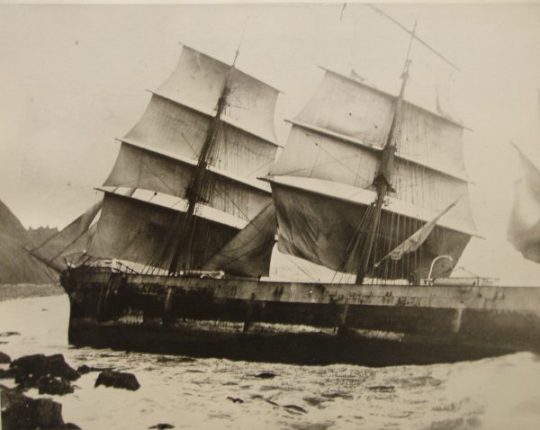
Photograph of the Glenesslin wreck taken by Paul Bartels.
#husheduphistory#featuredarticles#Oregon#Oregonhistory#shipwreck#Maritimehistory#Oregonship#Oregonshipwreck#Maritime#Mysteryatsea#HistoricConspiracy#HistoriesMysteries#thetruthisoutthere#mistake#scam#boatdrinking#daydrinking#oops#imonaboat#NeahkahnieMountain#drunkenmistake#gotawaywithit#truestory#historyiswild#histyoryisnotborning#historyisfun#historyisneat#forgottenhistory#strangehistory
1 note
·
View note
Photo
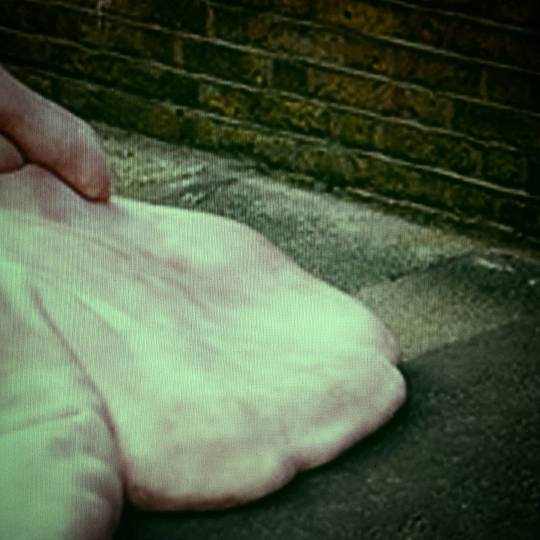
The Blob of 1846: On November 11th of 1846, a four foot, luminous ball fell from the sky and splattered in the street in New York. The gelatinous blob glowed and was reported to have such an offensive odor that New Yorkers within blocks of it had to be evacuated and treated for toxic fumes. Seven horses reportedly died because they could not be reached before the stink from the blob killed them. The Blob itself lost its structural integrity and was eventually washed away. #babettebombshell #forgottenhistory #theblob #unsolvedmysteries #skyfalls #strangeweather #phenomenon #historiesmysteries #fortean #xfiles
#skyfalls#phenomenon#xfiles#unsolvedmysteries#historiesmysteries#forgottenhistory#babettebombshell#fortean#theblob#strangeweather
0 notes
Photo

The Talons of The Thunderbird: On July 25th of 1977, three young boys were playing in the backyard of their home in Illinois, when two gigantic birds zoomed overhead to begin circling them. The giant birds were each the size of a sofa, with black feathers and the appearance of long-beaked vultures. When one of the creatures swooped down and snatched up 65 lbs Marlon Lowe from among the boys, his screams alerted his parents and neighbors. They ran out to see the young boy struggling for his life, as the bird lifted him 10 foot off the ground and attempted to carry him away. Marlon was able to beat on the bird and drop to the ground, but the injuries from the sharp talons of his attacker sent him to the emergency room. #babettebombshell #hauntedhotel #cryptozoology #thunderbirds #displacedanimals #insearchof #artbell #historiesmysteries #midnightinthedesert #fortean #xfiles
#artbell#displacedanimals#thunderbirds#xfiles#historiesmysteries#hauntedhotel#babettebombshell#fortean#cryptozoology#insearchof#midnightinthedesert
46 notes
·
View notes
Video
The Strathcona Sasquatch Footage: On June 7th of 2014, a witness taking a nature walk at the Strathcona Provincial Park on Vancouver Island, shot footage of a hairy, bipedal creature loping across the Canadian wilderness. #babettebombshell #hauntedhotel #unsolvedmysteries #cryptozoology #bigfoot #sasquatch #manbeast #findingbigfoot #mountainmonsters #historiesmysteries #fortean #xfiles
#manbeast#findingbigfoot#xfiles#unsolvedmysteries#historiesmysteries#hauntedhotel#mountainmonsters#babettebombshell#sasquatch#cryptozoology#bigfoot#fortean
2 notes
·
View notes